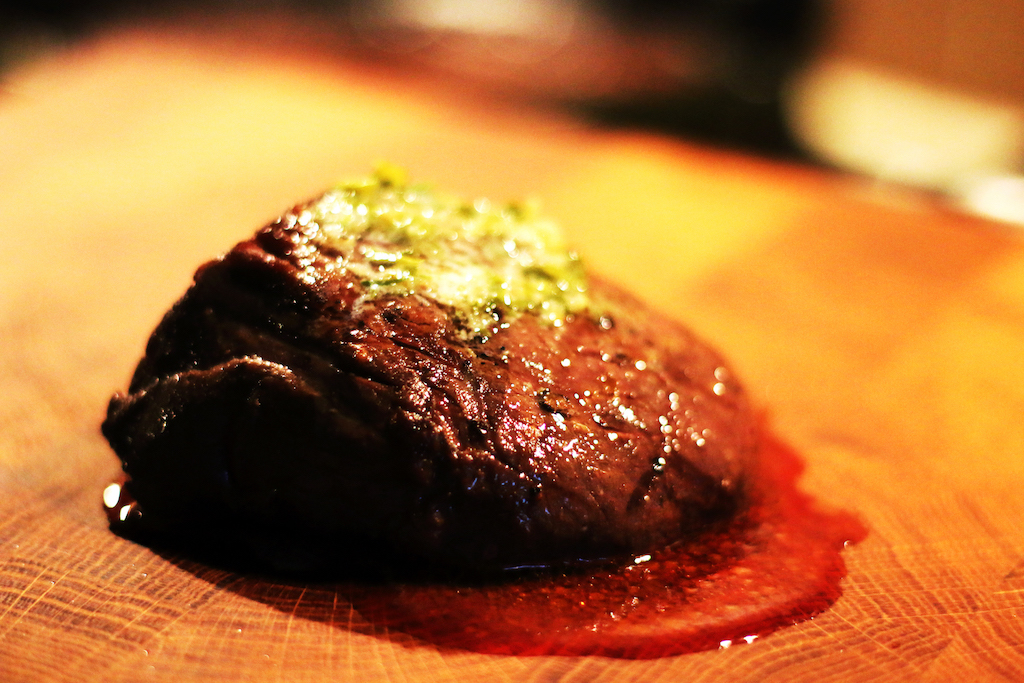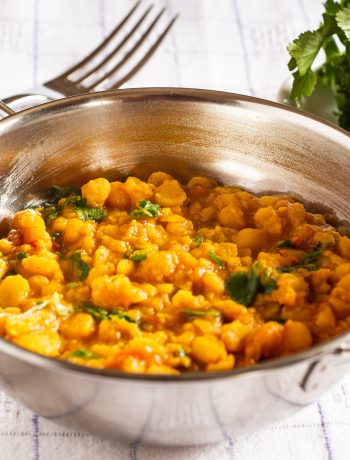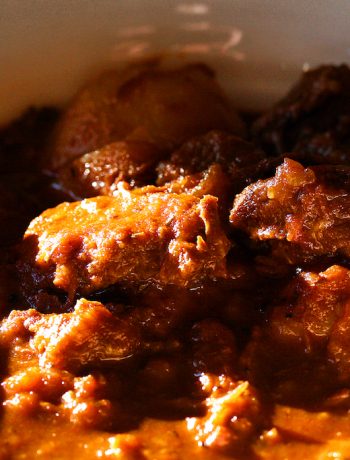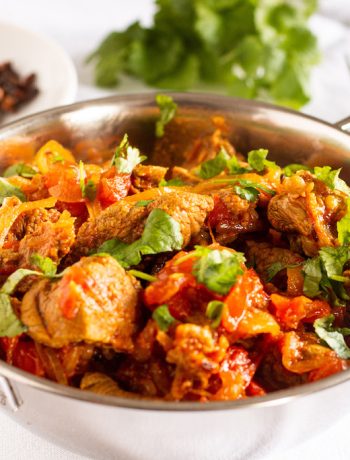I first encountered the concept of sous vide in a conversation with my Uncle. Uncle Geoff is a retired polymer chemist, and an enthusiastic cook. He treats cooking very much as an extension of his lab, and it was he that switched me on to the idea that cooking is an applied science. If you know the chemistry behind what you are doing, then you are better able to understand what elements of a recipe or cooking process cannot be altered, and which can be adapted … or removed. One of the most useful resources for cook interested in science is Peter Barham’s The Science of Cooking.
Geoff and I used to lunch together once a month when we were both working at the University of Liverpool. It was during one of these lunches that Geoff got talking about sous vide. In order to make meat edible, the proteins need to be denatured. If the cut of meat also contains collagen (sinew), then that also needs to be denatured or rendered. The key to cooking a piece of meat, therefore, it to ensure that the temperature of the centre of the cut reaches the temperature to required to denature everything in it. Collagen requires a higher temperature than muscle, and for this reason, one of the simplest applications of sous vide is the cooking of a beef fillet, because it contains only muscle and a bit of fat.
Temperature also affects the speed at which the different tissues in meat cook. Collagen denatures more quickly as temperature increases. Temperatures above 60˚C are good for breaking that down, this is why high temperatures and short cooking times are good for things like sirloin streak. But if you go too high, then the proteins can toughen – a process that begins above about 50˚C. Therefore, cooking meat is a compromise between the need to denature collagen and the desire to avoid toughening protein.
The temperature needed to denature a fillet steak is about 54˚C. Any lower and the muscle will be stringy and difficult to bite. Higher temperatures result in browning. 54˚C is a difficult thing to achieve using a domestic oven, so home cooks are increasingly taking their cue from the world of the pro kitchen, and employing a water bath. To cook this way, the steak is seasoned, sealed in a vacuum bag (sous vide means ‘under vacuum’ in French), and placed in water bath with a thermal circulator set at 54˚C. It takes an hour or so to cook a single fillet steak this way – longer for larger cuts (I once did a leg of lamb this way for 19 hours!).
Once the primary cooking time is up, the steak is de-bagged. At this point it looks like death – it has all the attractiveness of wartime boiled beef, and would probably taste pretty poor. For this reason, we need to run another chemical reaction. The required reaction is known as the Maillard reaction after Louis-Camille Maillard, who first wrote about it in 1912. This reaction runs at a much higher temperature than denaturation (around 150˚C), and it essentially converts protein and reducing sugars into a largely unknown mix of aromatic, super-tasty chemicals that you and I know as ‘a lovely crust.’ For that bit, get a pan very hot, add some butter and sear the steak very quickly on both sides – it will sear faster than raw steak because some of the cooking is already done.
Once seared, the steak should be rested for about 10 mins to allow the muscle fibres to relax.
Getting started in sous vide used to be an expensive and awkward affair. Water baths are pricey and take up a lot of storage space. But, the Nosey Chef has your back on that. I use a Vac-Tec water circulator that I put in a large IKEA stock pot. The advantage of this over a water bath is that you are using a pot you can use for other things, the circulator is relatively small, and you can upscale the whole affair to a Curver storage box for larger joints of meat. Other, cleverer circulators are available, such as Anova and Joule.
For the vacuum bit, I am lucky in that my mother once bought me a FoodSaver vacuum packer. This is a useful thing to have before you even start with the sous vide, and we consider it to be an essential tool to avoid waste (it pretty much prevents freezer burn). However, you can sous vide small cuts like steak by putting the joint in a zip-lock bag, lowering the bag into the water, which pushes the air out, and then sealing the bag. It can help to clip the back to the side of the pot with a clothes peg to stop it wandering around and to avoid any leakage around the seal. Timing and temperatures can be found on the Chef Steps site.
We have had great success with sous vide, and have used it for steaks, Sunday roasts and duck. I would not recommend it with fish, as I have seen people on Masterchef end up with a nasty, slimy mess that made John Torode gag. Best of all is venison steak because it is inexpensive, and virtually devoid of collagen.
This post has been edited since writing with help from Uncle Geoff.
Venison steak sous vide
Ingredients
- 2 venison steaks
- Salt and pepper
- 2 bay leaves
- 4 sprigs of thyme
- 50g butter
- 2 rounds of Café de Paris butter (see notes)
Instructions
Season the venison and place both steaks in a vacuum bag with the bay and thyme. Vacuum and seal the bag.
Place the bag in a water bath with a thermal circulator at 54˚C for 1–2 hours for rare. For other levels on doneness, try 58˚C for medium. Well done has no place here.
Heat 50g of butter in a griddle pan until it just starts to brown – this needs to be really hot.
Sear the steaks quickly on both sides – it is usually less than a minute on each side. If you cook for too long, you will start to cook the centre of the steak.
Set the steaks aside to rest.
Pour half a mug of water into the hot butter, and let it sizzle and reduce – the heat will emulsify the water into the fat. Plate the steaks and pour the butter sauce over both of them.
Place a round of Café de Paris butter on each steak and melt gently with a blowtorch.
Notes
Café de Paris butter recipe here.




 (164 votes, average: 3.80 out of 5)
(164 votes, average: 3.80 out of 5)


3 Comments
Barrie Smith
14/11/2018 at 7:13 pmJust stumbled across your website as we’ve just bought a sous vide machine and were looking for inspiration. Informative humorous and well put together. Many thanks.
Barrie
South Wales
Nigel Eastmond
14/11/2018 at 8:55 pmWe are really glad you like the site and took time to comment. There are a few sous vide things on here, including a Christmas goose!
John weyandt
28/09/2021 at 11:43 pmWe live on a big farm in the country and venison season is coming! Thanks for the great recipes and methodology. Gonna buy a Sous vide tomorrow. Bon Chance.